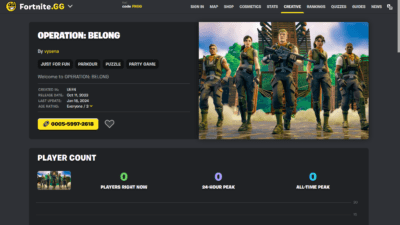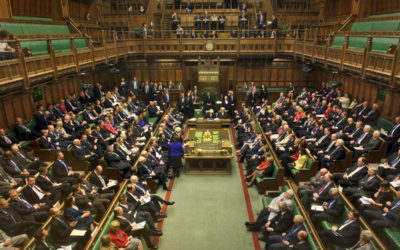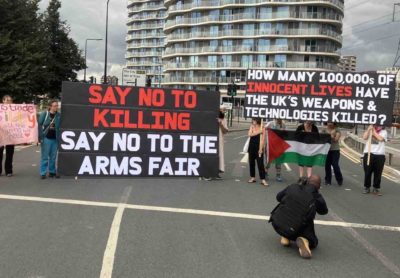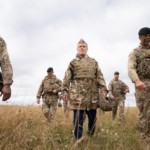Army defies child rights campaigners, intensifies intake of 16-year-olds for riskiest roles
Child Soldiers International press release
Figures released today reveal that the British Army has increased its intake of 16-year-olds in the past 12 months, defying calls from the UN, children’s rights organisations and others campaigning for an end to the recruitment of minors.
- 16-year-old recruits outnumber any other age group and are made to serve 50 per cent longer than adults
- Courts rule MoD has unlimited powers to discriminate against young recruits
In the 12 months to 30 September 2016, the Army enlisted 1,000 16-year-olds[1] (up from 870 in the previous 12 months)[2], accounting for 13 per cent of total enlisted intake. This makes 16-year-olds the single biggest age group entering the Army, for the first time since 2012. The overall intake of minors as a percentage of enlisted recruits rose to 24.1 per cent (up from 22.5 per cent in the previous period), while intake of adults decreased.
The Army’s recruitment policies state that it uses recruitment of minors as ‘an opportunity to mitigate Standard Entry [adult] shortfalls, particularly for the Infantry’.[3] The Infantry has the highest fatality and injury rate of any major branch of the armed forces, with infantrymen in Afghanistan seven times more likely to be killed than personnel in the rest of the British armed forces.[4] Army policy also imposes a longer minimum service period on those who enlist under age 18 than on adult recruits.[5]
“Polls show overwhelming public support for a minimum enlistment age of 18. But whatever you think the right age is for joining the Army, nobody can justify targeting 16-year-olds for recruitment into the roles adult recruits don’t want to do, and then forcing them to serve for longer than their adult counterparts.” said Rachel Taylor, spokesperson for Child Soldiers International.
The Royal Courts of Justice heard a claim against the Army’s minimum service period for minors brought by Child Soldiers International in June 2015. In his judgement, Justice Kenneth Parker agreed that the rules discriminated against minors as they did ‘treat those recruited under 18 less favourably’.[6] Despite this, he accepted the Ministry of Defence’s (MoD) claim that European and national law entitled it to discriminate against Army recruits on the basis of age or disability, without any limits of proportionality. An appeal against the judgment was scheduled to be heard earlier this month at the Court of Appeal, but was withdrawn.
“The MoD claims it is offering disadvantaged young people an opportunity by enlisting them at 16 but in reality, it is exploiting them. These policies put the army’s convenience above young people’s best interests,” said Rachel Taylor.
“If the MoD was serious about offering opportunities to young people, it would encourage them to stay in education until 18 and then offer them a full range of armed forces roles. Instead, it actively encourages them to leave school early and then offers them only the most unpopular, dangerous roles in the armed forces alongside substandard qualifications.”
These recruitment figures are released on the same day that the Scottish Parliament’s Public Petitions Committee will decide on a proposal to increase regulation of armed forces’ visits to schools.[7] The proposal is supported by the Children and Young People’s Commissioner for Scotland, Tam Baillie, who has provided evidence to the Committee. All four of the UK’s Children Commissioners have previously called on the MoD to raise the minimum enlistment age from 16 to 18, in a campaign backed by a range of national and international children’s rights organisations, teachers, faith groups, veterans, parliamentarians, and former Defence ministers.[8]
A nationwide IPSOS Mori poll in 2014 found that 78 per cent of respondents who expressed a view thought the minimum army recruitment age should be at least 18.[9] In June this year, the UN Committee on the Rights of the Child condemned the British army’s safeguards for ensuring informed consent of child recruits and their parents as “insufficient”[10] and called on the UK to raise its enlistment age.
A recent report by medical professionals examining the recruitment of minors in the UK also found that current recruitment practices ‘do not meet the criteria for full and informed consent’ and that military recruitment materials ‘take advantage of adolescent cognitive and psychosocial vulnerabilities’.[11]
ENDS
Notes for Editors:
- Ministry of Defence, UK armed forces biannual diversity statistics 2016, 1 October 2016. Released today and available at https://www.gov.uk/government/statistics/uk-armed-forces-biannual-diversity-statistics-2016. Table 8a shows intake by age in the 12 months to 30 September 2016. The figures cited refer to enlisted personnel so exclude commissioned officers, who cannot join below the age of 18.
- Summary of trends compared to previous 12-month period:
- The Army enlisted 1,860 minors, of which 1,000 were 16-year-olds. 16-year-olds accounted for 13.0 per cent of intake of all ages, up from 18 per cent (870 recruits) in the previous period. 17-year-olds accounted for 11.2 per cent of total Army intake, down slightly from 11.6per cent (930 recruits).
- The proportion of the Army’s intake aged under 18 increased from 22.5% to 24.1%.
- The RAF, Royal Navy and Royal Marines also increased their intake of minors, although in these services 17-year-olds still significantly outnumber 16-year- The proportion of the Navy’s intake aged under 18 increased from 10 to 13 per cent, while intake of minors into the RAF increased, from 7 to 10 per cent.
- The armed forces as a whole recruited 1,140 16-year-olds and 1,250 17-year-olds, from a total of 12,300 new recruits.
- In 2014 Child Soldiers International launched a judicial review against the terms of enlistment of minors which, if successful, would have forced the Army to stop imposing a longer minimum service period on minors than it does on adult recruits. Although minors have a right to be discharged before their 18th birthday, after this point the so-called “Catch-22” clause commits them to serve until they are at least 22 years old, regardless of their age when they joined. This means the youngest recruits have to serve for longest – 16-year-old recruits have a total minimum service period of six years, while 17-year-olds must serve for five. In contrast, adults can be discharged after just four years’ service.
- The large majority of countries worldwide now recruit only from age 18 or above. The UK is the only permanent member of the UN Security Council which still recruits 16-year-olds. In the United States the minimum recruitment age is 17 years, but minors only account for around 5 per cent of annual intake. (Full figures available on request).
- Supporters of the campaign to raise the enlistment age include: Child Soldiers International, ForcesWatch, Veterans for Peace, Children in Wales, National Union of Teachers (NUT), Medact, Children in Scotland, Wales UNCRC Monitoring Group, Wales Observatory on Human Rights of Children and Young People, Together (Scottish Alliance for Children’s Rights), Amnesty International UK, Children England, the Children’s Commissioners for the four regions of the UK, Children’s Rights Alliance England (CRAE), Liberty, The Who Cares? Trust, Northern Ireland Children’s Law Centre, British Institute of Human Rights, the Church of Scotland, the Church in Wales, General Assembly of Unitarian and Free Christian Churches, Methodist Peace Fellowship, Baptist Peace Fellowship, Quaker Peace and Social Witness, Pax Christi, Plaid Cymru, and the Green Party.
- The Defence Select Committee (2005, 2013, 2014), the Joint Committee on Human Rights (2009, 2010) and the UN Committee on the Rights of the Child (2002, 2008, 2016) have all called on the MoD to review the minimum recruitment age with a view to raising it to 18 years.
- Child Soldiers International is an international human rights research and advocacy organisation seeking to end the military recruitment of any person under the age of 18. Our research on child recruits in the British armed forces is available at https://www.child-soldiers.org/uk.
[1] Ministry of Defence (MoD), UK armed forces biannual diversity statistics 2016, 1 October 2016, Table 8a, https://www.gov.uk/government/statistics/uk-armed-forces-biannual-diversity-statistics-2016.
[2] ibid.
[3] MoD, Policy on recruiting Under-18s (U18), 2013, obtained under the Freedom of Information Act, Ref. FOI2015/00618, available at https://www.child-soldiers.org/freedom-of-information-requests. In 2015/16, 41 per cent of army recruits aged under 18 were enlisted into the infantry, versus 31 per cent of adult enlistees. Hansard: HC Deb, 25 May 2016, no. 38553; MoD, UK armed forces biannual diversity statistics, 1 April 2016.
[4] D Gee, The Last Ambush: Aspects of mental health in the British armed forces, 2013, (London: ForcesWatch), p.57, http://www.forceswatch.net/content/last-ambush.
[5] The Army Terms of Service Regulations 2007 (as amended), http://www.legislation.gov.uk/uksi/2007/3382/made. See Notes for Editors below.
[6] Child Soldiers International vs. Secretary of State for Defence. 2015 EWHC 2183 (Admin) case number CO/4671/2014, 24 July 2015.
[7] Available at http://www.parliament.scot/GettingInvolved/Petitions/armedforcesvisitstoschools.
[8] Open letter to the MoD from Children’s Rights organisations, 23 May 2016, https://www.child-soldiers.org/shop/open-letter-to-the-ministry-of-defence-from-childrens-rights-organisations-1. See Notes for Editors below for full list of supporters.
[9] Ipsos MORI, Nationwide poll conducted in July 2014 by Ipsos MORI on behalf of the Joseph Rowntree Reform Trust Ltd, full data available at http://forceswatch.net//sites/default/files/IPSOSsurvey2014-Forces_age.pdf. Poll question ‘In your opinion, what should be the minimum age to join the British army? Please answer regardless of whatever you believe the minimum age is at the moment.’
[10] UN Committee on the Rights of the Child, Concluding observations on the fifth periodic report of the United Kingdom of Great Britain and Northern Ireland (CRC/C/GBR/CO/5), 2016, available at http://tbinternet.ohchr.org/_layouts/treatybodyexternal/Download.aspx?symbolno=CRC%2fC%2fGBR%2fCO%2f5&Lang=en
[11] Medact, The Recruitment of Children by the UK Armed Forces: A Critique from Health Professionals, 2016. Available at http://www.medact.org/news/recruitment-children-uk-armed-forces-critique-health-professionals/.
See more: equality, legislation & policy, recruitment age, risks, terms of service, Child Soldiers International










